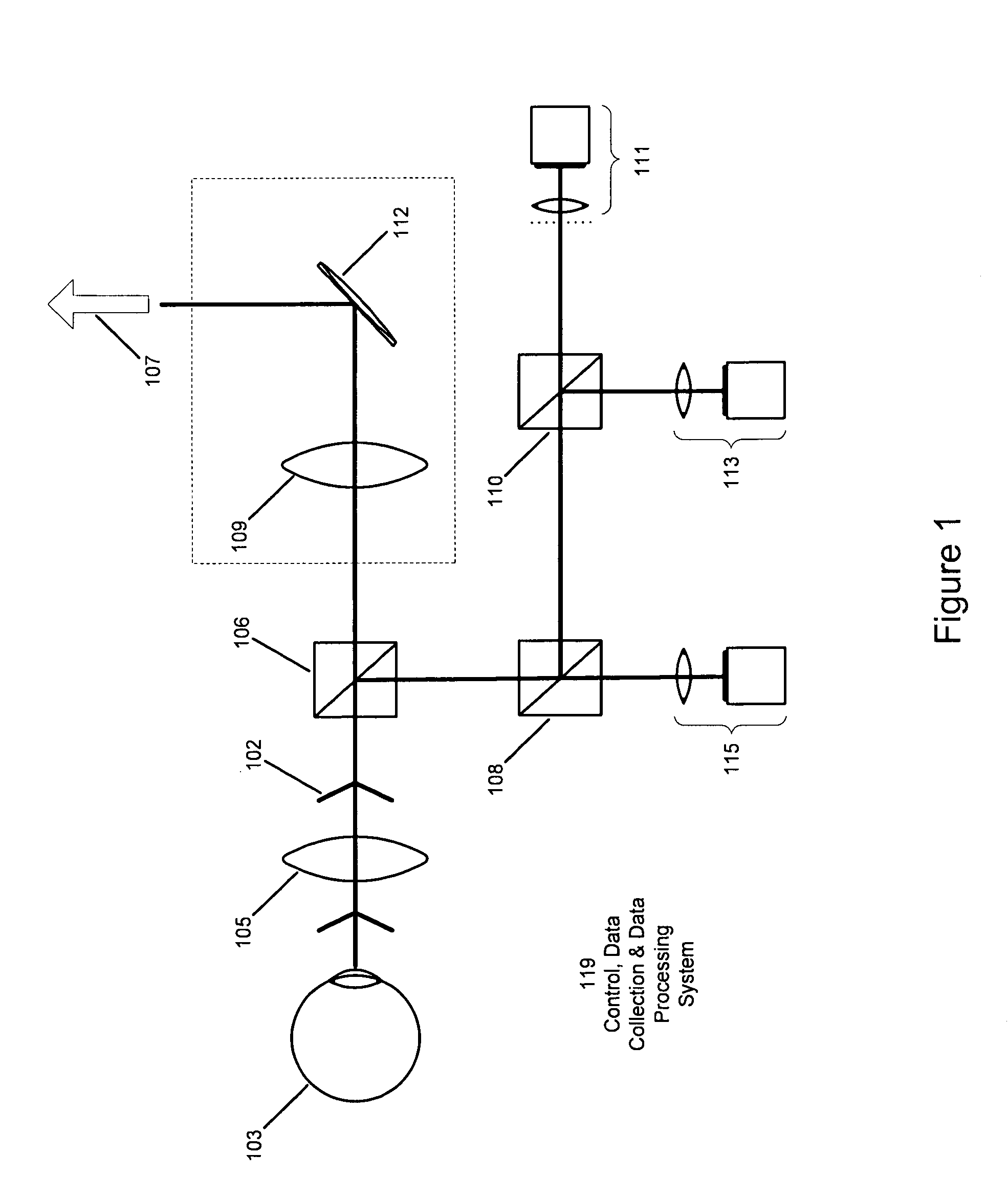Objective traumatic brain injury assessment system and method
a traumatic brain injury and assessment system technology, applied in the field of objective traumatic brain injury assessment system and method, can solve the problems of unpractical access to mris on scene, undiagnosed and untreated brain injury, nerve root or brain stem, etc., and achieve the effect of quick and reliable assessmen
- Summary
- Abstract
- Description
- Claims
- Application Information
AI Technical Summary
Benefits of technology
Problems solved by technology
Method used
Image
Examples
Embodiment Construction
[0037]Many aspects of visual functioning require communication among widely separated areas of the brain. The pathways connecting the retina to the primary visual cortex traverse its entire length. Injury to white matter connecting these widely spread vision-related areas may result in visual field deficits, changes in color vision, and / or oculomotor dysfunction. Oculomotor systems which govern eye movements and include vergences, accommodation, and versions, involve both brainstem, cortical and subcortical processing. Functional imaging studies have implicated multiple areas, including the paramedian pontine reticular formation, vermis of the cerebellum, superior colliculus, frontal and parietal eye fields, dorsolateral prefrontal cortex, visual cortex, vestibular cortex, basal ganglia and thalamus.
[0038]Injury to white matter connecting widely spread vision-related areas may result in visual field deficits, changes in color vision, and / or oculomotor dysfunction (e.g., vergence, ac...
PUM
 Login to View More
Login to View More Abstract
Description
Claims
Application Information
 Login to View More
Login to View More - R&D
- Intellectual Property
- Life Sciences
- Materials
- Tech Scout
- Unparalleled Data Quality
- Higher Quality Content
- 60% Fewer Hallucinations
Browse by: Latest US Patents, China's latest patents, Technical Efficacy Thesaurus, Application Domain, Technology Topic, Popular Technical Reports.
© 2025 PatSnap. All rights reserved.Legal|Privacy policy|Modern Slavery Act Transparency Statement|Sitemap|About US| Contact US: help@patsnap.com



